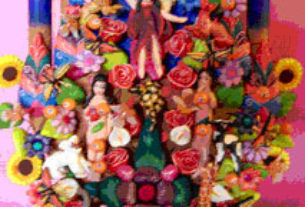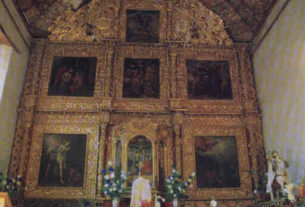Arts of Mexico
The well-known American poet Margaret Randall talks about the documentary “El Corno Emplumado: Una historia de los sesenta” (El Corno Emplumado: A story of the sixties”).
When I first arrived in Mexico City in the early sixties, it was an intellectual’s paradise. Latin-American writers in exile from their native countries had settled there. American artists and intellectuals disenchanted with American politics were putting down roots. Europeans in search of spiritual rejuvenation called the city their home. And poetry flourished.
For a number of years this mix from diverse cultures came together and gave the city an extraordinary creative vitality. Out of its synergistic fervor, El Corno Emplumado emerged, its light extinguished in the late sixties when Diaz Ordaz silenced, literally and symbolically, some of the best minds of that generation.
This past December Guadalajara had its gigantic annual book fair. It premiered the documentary “El Corno Emplumado: una historia de los sesenta”, and for the first time in 36 years a new generation of Mexicans was introduced to this extraordinary period in their history. Margaret Randall was co-publisher of El Corno Emplumado and a witness to those remarkable years, and I had the privilege of interviewing her recently.
RITA POMADE:
MS RANDALL, COULD YOU TELL ME SOMETHING ABOUT THE BACKGROUND OF THE FILM?
MARGARET RANDALL:
This film, “El Corno Emplumado: una historia de los sesenta” was made by two young filmmakers. Anne Mette Nielsen is Danish and Nicolenka Beltran is Mexican – originally from Guadalajara. An art curator in the U.S., a man named Robert Schweitzer who is a friend of Anne Mette’s, had the idea of making a film about the journal. He interested her in the project. She did most of the research, while her partner Nicolenka did the camera work. It is his first full-length documentary film.
They began working on the project about three years ago, and at first had very little money with which to bring it to fruition. They started out with an old pickup truck, driving through the U.S. making contact with some of the North American poets who published in El Corno. Then they headed south and did the same thing in Mexico. They also interviewed some of the poets from other countries – catching up with one of them in Poland (the Argentinean Miguel Grinberg!).
The film was made in Denmark and Mexico. As the project unfolded, they had to do quite a bit of archival research in Mexico, and they use some historic footage I’d never seen before. I think it must have been made available only after some of the material from 1968 was declassified.
The filmmakers weren’t in touch with me often throughout the project’s progress. Occasionally I would get an email from Anne Mette asking me where I thought they might be able to find such and such material. But our contact was quite sporadic. I think they were interested in making a film about El Corno because they knew it had played a major role in the independent literary/art movement of the sixties, on both continents.
EL CORNO EMPLUMADO WAS AN INTEGRAL PART OF THE CULTURAL SCENE IN MEXICO IN THE SIXTIES. HOW DID IT GET STARTED?
I arrived in Mexico City with my son, Gregory. I had the name and address of the U.S. poet Philip Lamantic, so I called him and he invited me over. In his apartment, in the Zona Rosa, poets would gather in the evenings to read their work. There were a number of Mexican poets, as well as a few from the U.S. and other countries. We read to one another, but it was clear that those of us from the U.S. didn’t really know enough Spanish to understand the subtleties of the poems in Spanish; and the same was true for the Latin American poets: their English wasn’t always good enough to catch the finer points of our poems. It soon became apparent that we needed a forum of some sort, a venue in which to make our work available in translation, to share it across borders.
That’s how El Corno was born. The name The Plumed Horn represented the jazz horn from the U.S. and the feathers of Quetzalcoatl – the culture of Meso-America. The name’s translation was El Corno Emplumado.
WHAT MADE THE JOURNAL SO SPECIAL?
You’ve got to remember that at the beginning of the 1960s U.S. writers were just beginning to emerge from the McCarthyism that had put such a chill on our country’s creativity throughout the preceding decade. In Latin America the history was a bit different, but there were still lots of bridges to be built. We all felt the need for a literary journal that would be a bridge. And some of us felt the passion necessary to make it happen.
El Corno’s first issue appeared on January 1, 1962, and it continued through the middle of 1969. It published most of the best poets, writers – artists, short-story writers, etc. writing during those years. We published Ernesto Cardenal for the first time in English, and Allen Ginsberg for the first time in Spanish. Many of the young unknown writers who appeared in our pages later became some of the most important of those years. As the magazine became well known throughout the world, however, some of the “greats” also sent us work: people like Herman Hesse and Samuel Beckett.
Mostly, El Corno focused on North and South America, but also published small anthologies of poetry from Finland, India, Australia and other places. Some of our visual artists were French and Spanish. The fourth issue of each year was a completely bilingual book: one year by a Latin American author and the next by a North American author.
HOW MANY PEOPLE READ THE JOURNAL?
It’s hard to say how extensive El Corno’s readership was. We printed 1,000 copies of our first issue but soon raised the print run to 3,000. We sent copies all around the world, but in very small quantities: 5 here, 10 there. We eventually had a subscription list of about 600, but many of these were university libraries. From the response, it seems that each copy of the journal got to a number of readers.
IS THERE ANY WAY PEOPLE CAN HAVE ACCESS TO THE PUBLICATION TODAY?
Today one can still find El Corno Emplumado in libraries: university libraries, some public libraries, and of course the personal libraries of writers and readers of those times. It’s hard to acquire issues although one does find them in second hand bookstores.
WHAT WERE THE TIMES LIKE WHEN YOU WERE PUBLISHING?
The times were exciting, passionate, tumultuous, politically as well as literarily. They were profoundly marked by the U.S. war in Vietnam, by the Cuban revolution, by the upsurge of other revolutionary armed struggle movements throughout Latin America, and of course, eventually by the Mexican Student movement of 1968. U.S. poets, still under the pall of McCarthyism, had this sense that it wasn’t kosher to write about political themes. Our Latin American sisters and brothers showed us this wasn’t so.
HAVE THOSE YEARS INFLUENCED THE DIRECTION OF YOUR WRITING?
Those years were fundamental to my development as a writer and as a human being. So of course they greatly influenced my writing. But my whole life – and much else – has influenced my writing as well. Since 1969, when El Corno died, my writing has changed as anyone’s would: with other life experiences, with maturity, and with how the world itself has changed in these years. I hope my work is more mature, deeper, and more professional than it was back then.
WHAT ARE YOU WORKING ON NOW?
Right now I am working on a book – made up of poetry and prosody – which is a long meditation on a Kayenta Anasazi ruin in northern Arizona called Kee Tseel. This ruin is quite isolated. One has to hike 18 miles to see it, and only a few people are permitted to make the hike each day between late May and early September. I hiked in this past September.
Kee Tseel differs from the many other Anasazi ruins in the U.S. southwest because it has never been restored. Many of the original items the people used are still there: pottery, tools, even food. The Navajo nation protects the ruin. The book I am working on is, as I say, a kind of meditation on this place and on the people who inhabited it for a single generation between 1230 and 1286. But, like all my work, it is not bound by its main subject. It branches out to all sorts of things, including the current U.S. war in Iraq.
This past year Margaret Randall has published two new books. Narrative of Power: Essays for an Endangered Century, was published by Common Courage Press. It contains a series of essays that address a variety of current issues – both political and social, cultural and personal. Into Another Time: Grand Canyon Reflections, is a book of poems and drawings. It is the first project her partner Barbara Byers and she have done together.
Ms Randall’s books are available in bookstores and through Amazon.com.


